Selby, West Riding of Yorkshire
Up to 1834
Selby's first workhouses is thought to date from around 1741 althouggh its location is unknown. A parliamentary report of 1777 recorded Selby's workhouse could accommodate up to 20 inmates. A new workhouse was opened in 1785 on the north side of Gowthorpe in property administered by the Feoffees, a body acting as trustees for local charitable endowments.
According to the 1854 map (below) South Duffield had a group of "Poor's Houses" at the south of the village, just north of where the Old School now stands..
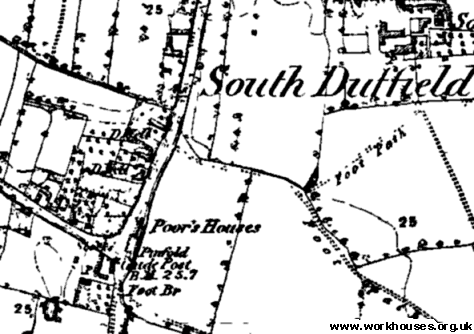
South Duffield Poor's Houses site, 1854.
At Cliffe (or Cliff), "Widows' Houses" stood at the south-east of the village.
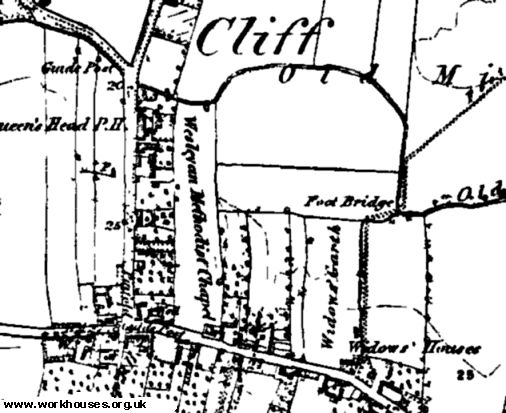
Cliffe Widows' Houses site, 1854.
After 1834
Selby Poor Law Union was formed on 15th February 1837. Its operation was overseen by an elected Board of Guardians, 29 in number, representing its 27 constituent parishes as listed below (figures in brackets indicate numbers of Guardians if more than one):
West Riding of Yorkshire:
Barlow, Brayton, Burn, Camblesforth, Carlton, Cawood, East and West Cowick, Drax, Gateforth, Gowdall, Haddlesey Chapel, Hirst Courtney, Long Drax, Newland, Selby (3), Snaith, Temple Hirst, Thorpe Willoughby, Wistow.
East Riding of Yorkshire:
Barlby, Cliffe, North Duffield, South Duffield, Kelfield, Osgodby, Riccal, Skipwith.
Later Additions:
Biggin (from 1869), West Haddlesey (from 1869), Hambleton (from 1869), Little Fenton (from 1869), Ryther cum Ossendyke (1837-69).
The population falling within the Union at the 1831 census had been 14,782 with parishes ranging in size from Hirst Courtney (population 117) to Selby itself (4,600).
Selby Union workhouse was erected in 1837 at the south side of Doncaster Road (now Brook Street) in Selby. The main building, constructed from brick with stone facings, lay at the east of the site with a porter's lodge to its east. It could house around 70 inmates. The buildings comprised an entrance block at the east with a central archway at the north side of which lay the Guardians' board-room. The main block, which had a corridor along its length, housed females at the north and males at the south, with boys' and girls' school rooms at the far end of each side, and a dining-hall cum chapel at the centre. A hospital block lay at the east of the site. The workhouse location and layout are shown on the 1847 map below.
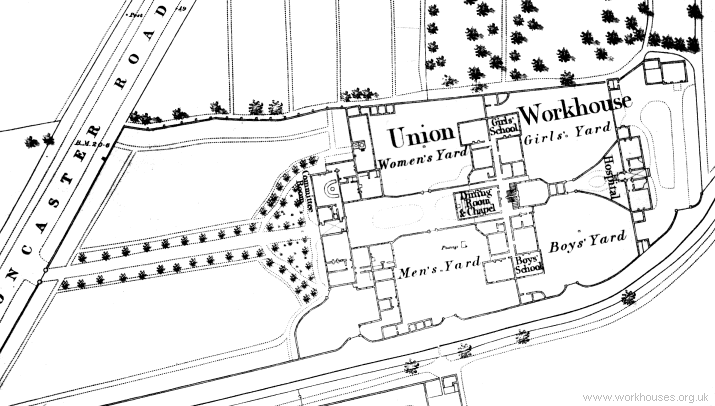
Selby workhouse site, 1847.
A major redevelopment of the site in the 1890s removed the original entrance block and hospital. A new hospital block was erected at the north-west and a small mental block was added at the centre of the site. A casuals' block was built along the lane at the south of the site, Union Lane, together with a new Guardians' board-room at its west. The extended buildings are shown on the 1905 map below.
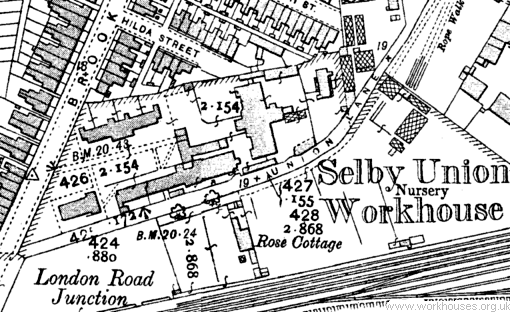
Selby workhouse site, 1905.
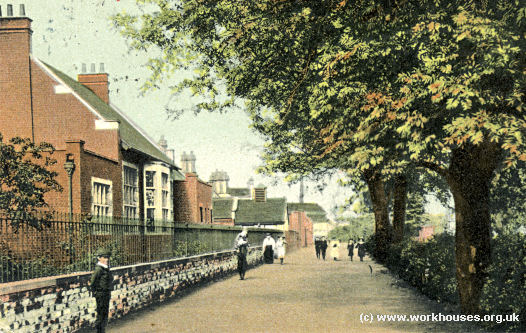
Selby workhouse Union Lane frontage from the south-west, c.1907.
© Peter Higginbotham.
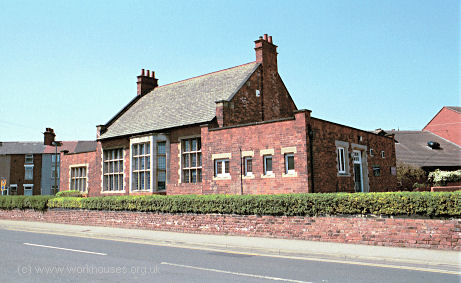
Selby board-room block from the south-east, 2001.
© Peter Higginbotham.
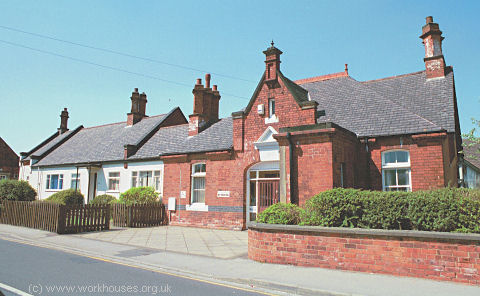
Selby casual-ward block from the south-east, 2001.
© Peter Higginbotham.
In 1930, control of the institution passed to the West Riding County Council. A plan of the site at that date is shown below. It could then house up to 158 inmates, including 47 casuals (40 male and 7 female). The casuals' block contained thirty-two cells and had iron beds with canvas mattresses. Twenty-nine of the cells had a stone-breaking shed attached, with wood-cutting sheds also being provided. The site then became a Public Assistance Institution mainly providing accommodation for the elderly and chronic sick, unmarried mothers, and vagrants.
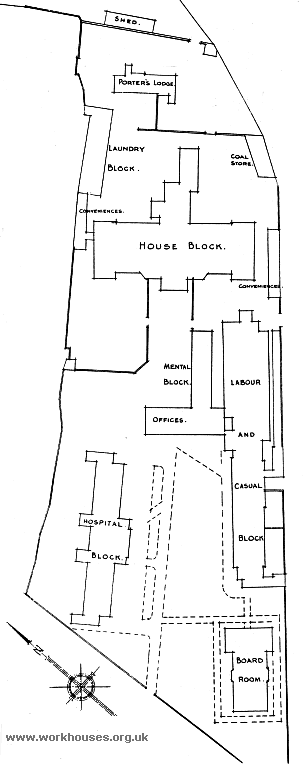
Selby workhouse site, 1930.
After 1948, the establishment became Brook Lodge old people's home. The old main block of the workhouse was demolished and replaced in the 1960s. In 2001, the site was occupied by a home and day centre for the elderly, with only the former board-room and casual-ward blocks surviving from the workhouse era.
Staff
Inmates
Records
Note: many repositories impose a closure period of up to 100 years for records identifying individuals. Before travelling a long distance, always check that the records you want to consult will be available.
- North Yorkshire County Record Office, Malpas Road, Northallerton DL7 8TB. Few local records survive: Deaths register (1914-42); Lunatics register (1889-1947).
Bibliography
Links
- Ripon Workhouse Museum and Garden, Sharow View, Allhallowgate, Ripon HG4 1LE.
Unless otherwise indicated, this page () is copyright Peter Higginbotham. Contents may not be reproduced without permission.


